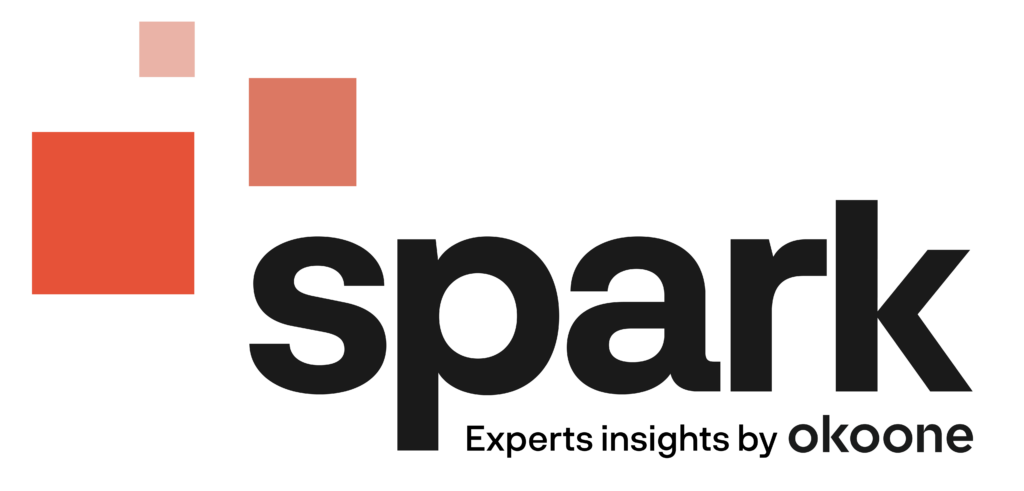AI is displacing traditional roles while creating new opportunities
We’re not heading into a world where AI takes all the jobs and leaves nothing behind. That narrative misses the point. Yes, artificial intelligence is accelerating fast, faster than most systems and people can adapt. But rather than eliminating work, it’s reshaping it. It’s doing what smart systems should do: reducing friction, automating repetition, boosting throughput.
So traditional roles rooted in predictable, rules-based work? They’re going. That part’s real. Legal clerks, data analysts, some areas of software development, many of these functions have been scoped, trained, and modeled into AI systems that consistently outpace human productivity in their domain. Companies deploying AI are scaling. If one machine learning model can run five financial forecasts in minutes, why would an enterprise keep three data teams on payroll doing the same?
But that’s just one side of the equation. Look closer and you’ll see the demand shifting, not disappearing. The AI economy is generating new job categories that didn’t exist five years ago. Roles like prompt engineers, AI compliance officers, and model supervisors are becoming essential. These are core to success in AI-integrated operations. Execution now requires human minds steeped in context, nuance, and strategic intent to work alongside AI.
If your employees can’t make sense of what the models are doing, or worse, don’t know how to control them, AI becomes a risk, not a resource. That’s why the smartest companies are building talent around their AI. They’re hiring or reskilling people who can leverage AI systems and improve enterprise-level decisions in finance, security, communications, and product development.
You don’t need to overhaul your organization overnight. But the bottom line is this: AI isn’t a standalone entity. It depends heavily on human oversight and intelligent integration. Businesses that embrace this dynamic will move faster, scale smarter, and out-execute competitors stuck in the old model.
Data confirms the momentum: Anthropic found that AI can already handle 43% of current jobs. According to the World Economic Forum, we’ll see a net gain of 78 million jobs by 2025, with 92 million disappearing and 170 million emerging. That’s a productivity pivot at global scale. Don’t wait for stability. Define it.
Roles requiring human empathy, creativity, and complex judgement remain resilient
Let’s be clear, AI isn’t replacing everyone. And more importantly, it shouldn’t. Not because of philosophical reasons, but because there are still things it can’t do.
AI is excellent at pattern recognition, repetition, and processes defined by logic and structure. But it breaks down fast when the work demands emotional intelligence, contextual judgement, or trust-driven decision-making. These are areas where human performance remains far more effective, and in many cases, irreplaceable.
Jobs in healthcare, legal strategy, mental health, and skilled trades remain firmly rooted in human intelligence. A machine learning model can analyze patient records or medical images at scale, yes, but it can’t build relationships with patients, sense emotional subtleties, or adapt in real time to complex human needs. That’s just how these systems work, they optimize for data, not connection.
Same applies in counseling and negotiation. You can synthesize text or simulate tone with current generative models, but people still identify authenticity, consciously or not. Human empathy, trust, and adaptability are performance advantages. They make teams function, sales convert, and partnerships last.
From a product strategy and org design standpoint, the implication is obvious: these traits need to be prioritized. Don’t strip roles of their human elements in a rush to automate. Instead, reinforce them. Align AI investment where it improves processes but rely on people where nuance matters.
This is backed by shifting sentiment across markets. A recent study found that 60% of Americans are still uncomfortable with AI-generated medical diagnoses. That’s a strong signal: even if the technology is statistically accurate, people want a person who can interpret it, question it, and adapt its insight to the real world.
And in distributed teams and remote environments, lack of interpersonal connection is becoming a productivity issue. According to a 2022 study by MindShare Partners, 55% of remote workers cite loneliness as a top challenge. Human connection is foundational component of effective organizations.
So when you prioritize workforce strategy, think precision, but don’t devalue humanity in the process. AI can’t offer intuition. It can’t foster trust. And it can’t invent new ideas outside its training data. That’s still you—and your team. Invest accordingly.
AI is transforming industries by automating repetitive tasks
The shift is already here. Across sectors, AI is reducing cost structures and increasing throughput by automating repetitive, input-heavy tasks. Areas like manufacturing, finance, journalism, and customer service are already operating differently.
Start with manufacturing. Companies like Amazon have deployed over 750,000 mobile robots and tens of thousands of robotic arms to speed up logistics. These machines execute repetitive loads, sort packages, and follow operational rules without fatigue or error. That’s translated to a 25% reduction in order fulfillment costs. That’s a huge competitive gap for any logistics company still relying on legacy operations.
In finance, the changes are even more systemic. AI is now used in fraud detection, bookkeeping, real-time risk analysis, and customer communication workflows. The numbers tell the story: in 2023 alone, financial services invested roughly $35 billion into AI, with banking leading at approximately $21 billion. This kind of capital shift signals long-term commitment. Not experimentation, adoption.
In journalism, AI is driving high-volume content generation. The Associated Press now publishes roughly 40,000 AI-generated stories per year. These systems handle the consistency, formatting, and fact-collection steps of reporting. But they still require human editors to review context, tone, judgment, and accuracy—particularly on sensitive or high-stakes topics. The point is, traditional roles are evolving into oversight positions rather than disappearing entirely.
Customer service is also in rapid transition. AI-powered chatbots and natural-language virtual agents now field thousands of tickets and help requests daily. They resolve scripted issues instantly, which cuts down operational load and reduces the need for large call centers. Companies like NICE are now deploying AI tools for basic chat responses and for creating custom legal documentation and mental health protocols. That extends AI’s influence into tasks that used to require full-time human teams.
What business leaders need to know is this, reduction in repetitive work means task reallocation. It means moving human teams to problems that require analysis, relationship-building, and long-term strategic thinking while letting AI handle the throughput.
If you haven’t already, now is the time to audit functions inside your organization. Which processes are deterministic? Which are still based on judgment and variability? That audit is the first step toward building an AI-integrated operation that doesn’t just cut costs, but scales intelligently.
AI-Resilient careers emphasize oversight and Human-AI collaboration
We’ve passed the point where AI can operate in isolation. It performs best in environments where humans are actively directing, refining, and overseeing its output. That’s why new job roles are invaluable. The shift isn’t “AI vs. humans.” The real focus now is how capable your people are at managing intelligent systems effectively.
Business leaders are already dealing with this gap. According to recent data, 70% of CEOs say they feel insecure about their AI strategy. The top issue is the lack of skilled people to direct them. That exposes the misconception that AI is a plug-and-play solution. It’s not. It’s a system that amplifies scale, but without human alignment, you risk inaccuracy, compliance failures, and reputational damage.
That’s where new roles like AI model trainers, prompt engineers, human-in-the-loop supervisors, compliance leads, and AI strategy officers come in. These professionals don’t build the models from scratch, they operationalize them. They make the outputs accurate, contextual, and aligned with brand, legal, and ethical standards. This is now a performance layer, not a support function.
You’ll also need roles that sit at the intersection of AI systems and business processes. These include people who know how to connect AI to workflows, spot failure points, and apply judgment to outputs before they’re acted on. For example, in highly regulated sectors like finance or healthcare, governance requires functional accuracy, and explainability. That only comes through human oversight, documenting model behavior and rationale in a way that regulators, and customers, can trust.
Executives need to structure teams accordingly. Hiring software engineers is still key, but AI fluency must scale across business units, from marketing to operations to legal. If your general managers and analysts can’t work with adaptive systems, they’ll consistently underperform against teams that can.
You can’t scale AI without scaling its human integration. That means investing in retraining your talent pool and upgrading your organizational chart to reflect AI-specific roles and collaboration mechanisms. Ignore this element, and your AI investment becomes shelfware or, worse, a liability.
This is the new trajectory: AI as infrastructure, with humans fine-tuning results, defining decision thresholds, and managing long-game risks. Companies that solve for that will define the standard. The rest will struggle to keep up.
Predictable, routine jobs face high risk of automation
If your business still relies heavily on people performing task-based, rule-driven roles, those positions are being automated, fast. AI excels where the input is structured, the variables are limited, and the outcomes are statistically consistent. Jobs built on predictable workflows, like data entry, bookkeeping, customer support, telemarketing, and scheduling, are already being redefined or removed entirely in companies that have implemented AI effectively.
AI tools are parsing spreadsheets, tagging data, generating reports, and responding to customer queries in milliseconds. Companies are already replacing legacy processes and cutting operational costs where human input doesn’t add strategic value.
Telemarketing scripts, appointment handling, inventory tracking, proofreading, these are being executed faster, more accurately, and at greater volume by machine systems. For example, automated chatbots manage customer interactions in retail without delay, while natural language tools handle proofreading, grammar-checking, and content cleanup without fatigue. These tools don’t need time off, and their performance scales with compute—so long as the input remains repetitive and structured.
The result: roles that exist primarily to perform such tasks are at the highest risk of redundancy. According to the World Economic Forum, 92 million jobs are expected to disappear by 2025, with most coming from precisely these areas of repetitive task execution.
For leadership, this shift presents a clear mandate. You need to identify where in your organization humans are still doing work that no longer needs a human touch. That means reallocating talent to functions that drive value and differentiator outcomes, functions where AI hits its limitations.
Treat workforce planning as a strategic lever, not just a line item. If you’ve got 100 people reconciling invoices, maintaining calendar schedules, or manually compiling data, you’re holding your operation back. These tasks should already be handled by AI. Your people should be running audits, making decisions, and building systems, not executing repetitive actions machines now do better.
The companies moving fastest are already breaking down their org charts, isolating redundant workflows, and reassigning labor where creativity, adaptability, and domain expertise matter. If you want relevance in the next decade, you need to start doing the same, now.
Futureproofing careers requires reskilling, AI adoption, and enhanced soft skills
Adaptability isn’t optional anymore. As AI systems integrate deeper into daily operations, every professional now has a choice: upgrade, or risk becoming obsolete. The skills that kept people valuable five years ago won’t be enough five years from now. Reskilling toward AI fluency and doubling down on core human capabilities is now a requirement, not a competitive advantage.
Over 50% of today’s employers already prioritize AI literacy during recruitment. That number is only going up. It’s not just developers or data scientists, it’s expected across departments. Whether you’re in finance, sales, logistics, or HR, if you don’t understand how to work with AI tools, you’re lagging behind.
Start with the basics. Your people need to know how to use the tools relevant to their function. That could mean mastering GitHub Copilot for back-end coding, using generative platforms to create marketing drafts faster, building smarter dashboards with AI support, or managing AI-enhanced CRM systems in real time. These tools let teams offload the repetitive work and focus on impact. Product managers, analysts, and designers who can use AI to accelerate their workflows are already outperforming those who can’t.
As AI takes over mechanical tasks, the work remaining becomes more human. Skills like communication, negotiation, presentation, decision-making, leadership, those are not just valuable, they’re irreplaceable. A model can summarize a report fast. It can’t defend that report to a board or lead a team in responding to it. It can write code, but not navigate internal politics, align stakeholders, or build consensus.
Now is the time to invest, personally and organizationally. Encourage structured learning. Host AI training for departments. Put your upskilling budget toward tools and habits that actually close performance gaps. Teach public speaking, emotional intelligence, and critical thinking alongside prompt engineering and AI configuration.
There’s another dimension: strategic career movement. Some functions will shrink. Others will grow. Smart professionals are already pivoting into AI-resilient roles. Strategists, negotiators, creative directors, therapists, senior operators, these roles don’t just survive in the AI economy, they thrive. If your teams don’t know which roles are safe, they can’t plan. That’s your job as leadership.
Education is also responding. In a recent study, 65.7% of medical students reported that AI tutoring accelerated their learning better than traditional methods. Speed of learning is now a competitive factor, and AI is redefining how fast people upskill. That applies to the enterprise, too.
AI’s impact extends beyond jobs to reshape economic policies and social structures
AI is putting pressure on governments, regulators, and economic systems to evolve fast. The technology is progressing faster than most institutions can respond. This poses risks. Not just for companies that lag in adoption, but for entire economies that aren’t ready for large-scale job displacement, wage disruption, or market imbalance.
Full automation, especially in industries with high employment density, creates short-term instability if there’s no coordinated policy framework. That’s why discussions around regulation and economic safeguards are increasing. Across sectors, there’s growing recognition that a workforce transition of this scale doesn’t manage itself. It needs deliberate policy planning, structured social protection, and responsible innovation from the private sector.
Elon Musk has publicly warned that AI requires proactive regulation, that building such technologies without policy containment creates unnecessary risk. He’s not wrong. When systems are capable of accelerating change across finance, transport, communications, and defense, waiting for problems to emerge before acting is not leadership. It’s negligence.
Universal Basic Income (UBI) is becoming part of this policy conversation. More than 50% of Americans now support UBI as a safety net in an increasingly automated economy. That support is rising as more roles, especially at the low and mid-skill levels, face rapid elimination and replacement with systems that can scale at near-zero marginal cost.
Martin Ford, author of Rise of the Robots, has spoken out on this. His warning is clear: if governments and businesses don’t address the economic shift AI brings, inequality will escalate. Concentration of capital in companies deploying intelligent automation at scale will create labor market fractures that destabilize consumption patterns and democratic foundations.
Expect regulation to catch up. Prepare for changes to licensing, privacy, explainability standards, and liability frameworks. Start building compliance infrastructure now or risk being forced to do it under tighter timelines and public pressure.
The pace of AI policy development varies country by country. If your data systems, supply chains, or talent pools stretch across borders, and they probably do, you need a map of where AI regulation is going, not where it is today.
Keep your teams briefed on regulatory trends and developing ethical frameworks. Join the dialogues. Contribute input where you can. Countries, companies, and citizens all play a role in determining what kind of AI economy gets built, and who it works for.
The best workforce in the next era won’t be the one that automates the most. It will be the one that scales with stability because strategic leadership kept pace with policy, public interest, and structural change. That’s where the long-term advantage will come from.
The bottom line
AI isn’t a disruption you can ignore or delegate. It’s a permanent shift in how value is created, scaled, and defended. Roles are evolving faster than org charts. Talent needs are shifting faster than hiring plans. And systems are learning faster than most teams can adapt without direct strategic pressure from the top.
The upside is enormous. AI can streamline decision-making, speed up execution, and unlock efficiency at scale. But none of that happens by default. It only works if you actively structure your org to integrate AI where it matters, and just as importantly, bring the right people in to guide it.
Human judgment, creativity, and ethics are increasingly what separates good outcomes from irreversible mistakes. Leaders who understand that AI is a force multiplier put themselves in a position to build resilient, high-performance teams in real time.
This is your job now: make your systems smarter, your people sharper, and your organization faster. If you’re not already investing in wide-scale reskilling, building AI-literate culture, and tracking regulatory shifts, you’re already playing catch-up.
Velocity belongs to those who move first and adapt fast. Lead from the front.





